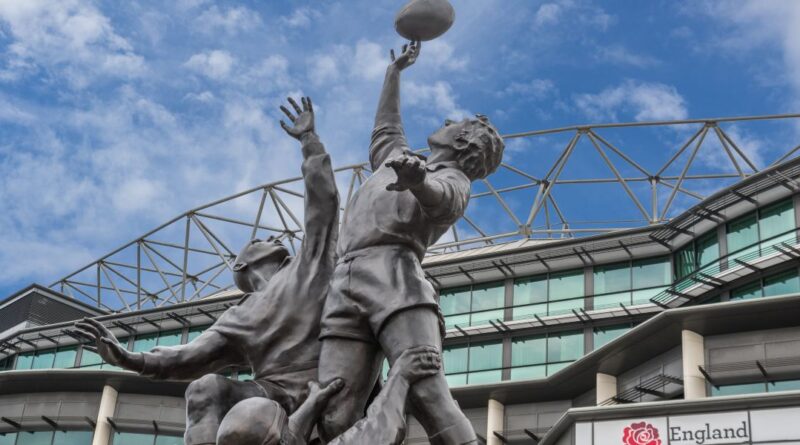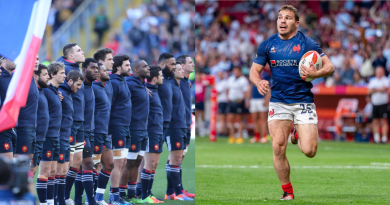Huge revenue jump can’t hide rugby’s looming trouble
A shifting financial landscape
For readers less familiar with rugby governance, the Rugby Football Union (RFU) is the national body responsible for running the England national teams and overseeing the game’s development.
It relies heavily on income from matches played at Twickenham Stadium, especially international fixtures that draw large crowds and commercial interest.
The RFU’s newest financial accounts reflect an important rebound. A busy schedule of seven men’s internationals at Twickenham between June 2024 and June 2025, far more than the previous year, helped generate a significant rise in income.
According to BBC Sport, total revenue reached £228m while losses dropped to just £2m, a major improvement from the previous year’s £42m deficit.
Read also: Xabi Alonso under fire as Real Madrid leaders face rising tension
These figures matter because the RFU, unlike some global sports governing bodies, is unusually dependent on matchday earnings.
When the national team plays fewer home games, or when preparations for a World Cup increase costs, the organisation’s finances can swing sharply.
Leadership under pressure
Chief executive Bill Sweeney told BBC Sport that the RFU was in a stronger position than in recent years, though he emphasised that financial pressures remain.
His leadership has been the subject of debate, especially after last season’s large loss prompted a vote of no confidence.
Read also: Ronaldo cleared for World Cup opener after unusual FIFA ruling
Sweeney ultimately kept his role, but the incident revealed long standing concerns about how the RFU manages spending, communication and strategy.
To understand this tension, it helps to know that English rugby has faced multiple shocks over the past decade. The collapse of several Premiership clubs, including Worcester Warriors and Wasps, shook confidence in the sport’s financial health.
At the same time, rising operational costs, insurance demands and player welfare requirements have made elite rugby more expensive to run.
A cycle shaped by events, not just planning
The RFU works within a four year financial cycle linked to the men’s Rugby World Cup. Typically, the first year is financially the strongest, while the fourth year often brings losses because unions generate less direct income during a World Cup season.
Read also: Why all roads lead back to Manchester for Vincent Kompany
Chief financial officer Francesca Pierce described the current rebound as an essential foundation for the tougher years ahead. She also noted that broader economic trends, such as inflation and higher stadium operating costs, complicate long term planning.
Talks between the RFU and World Rugby continue over how revenue is allocated in World Cup years. Many unions, not just England, have argued that the current model leaves national bodies carrying higher costs without equivalent returns.
The recent financial crisis in English club rugby
For readers completely new to the topic, one of the biggest reasons for concern about English rugby’s long term future is the severe financial instability that has swept through the professional club game.
Over the past decade, several Premiership clubs have struggled to stay afloat. The crisis came to a head between 2022 and 2023, when three major clubs were lost in quick succession.
Read also: Gable Steveson’s rise draws UFC interest after another fast finish
Worcester Warriors entered administration after failing to meet tax obligations, Wasps were suspended from the league due to unpaid debts and London Irish collapsed under the weight of a £30m shortfall.
All three were removed from Premiership Rugby, leaving players, staff and supporters without a team almost overnight.
These failures exposed deeper structural problems. Premiership clubs had long relied on wealthy owners to cover large annual losses, a model that became unsustainable as operating costs rose and revenue flattened.
The competitive imbalance between richer and poorer clubs widened, while the pandemic wiped out matchday income for an entire season, accelerating financial pressures that had been building for years.
Read also: FIFA set Cristiano Ronaldo’s World Cup fate after Dublin red card
As a result, confidence in the business side of English rugby was shaken. The RFU faced criticism for not doing enough to monitor club finances, while Premiership Rugby was accused of lacking financial transparency.
Although reforms are underway, including new spending controls and discussions about central contracts for elite players, the crisis continues to influence how the RFU approaches long term financial planning.
How Premiership Rugby is structured
For those unfamiliar with the league, Premiership Rugby is the top tier of professional club rugby union in England. It operates separately from the RFU but relies on it for regulation, player welfare standards and overall governance of the sport.
Here is how the structure works:
• Premiership Rugby is run by the clubs themselves, who are shareholders in the league. Each club has a vote on commercial decisions, competition rules, broadcasting deals and revenue distribution.
• The RFU oversees the broader framework of English rugby and approves regulations, but Premiership Rugby manages its own commercial strategy. This includes negotiating television contracts, sponsorship agreements and league wide marketing initiatives.
• The league currently sits below the RFU controlled Championship, though promotion and relegation rules have changed several times. At times, promotion has been suspended, creating tension between the professional and semi professional tiers of the game.
• Most clubs are privately owned and rely on significant financial backing from wealthy individuals or investment groups. Unlike football, rugby clubs typically generate limited profit from matchdays alone, making them more vulnerable to economic shocks.
• Player salaries are controlled by a salary cap, which was tightened after the financial crisis to reduce overspending and bring greater stability to club budgets.
Understanding this structure is key to grasping why the financial collapse of clubs created such a ripple effect. With no centralised financial safety net and heavy dependence on owners, once a club ran out of cash there was often no mechanism in place to save it.
Twickenham’s uncertain future
Twickenham, the RFU’s home ground since 1909, is central to the organisation’s financial model. The stadium hosts England’s home internationals and contributes tens of millions of pounds each year to the RFU and the local economy.
However, the future of a large scale redevelopment of the surrounding Allianz area remains unclear. The project is expected to exceed £650m and requires approval from the local council to stage 15 non rugby events annually, such as concerts. At present, the council has not granted that permission.
This matters because modern stadiums typically rely on year round activity to remain financially viable.
Wembley stages dozens of concerts and sporting events each year, and Tottenham Hotspur’s ground has become a regular venue for NFL games and entertainment events. Twickenham, by contrast, hosts very few non rugby events, which limits the RFU’s ability to diversify revenue.
Although the RFU says staying at Twickenham remains its preferred outcome, contingency planning is now underway in case approval does not come through. Relocation is described as a last resort, but its inclusion shows how serious the financial balance has become.




